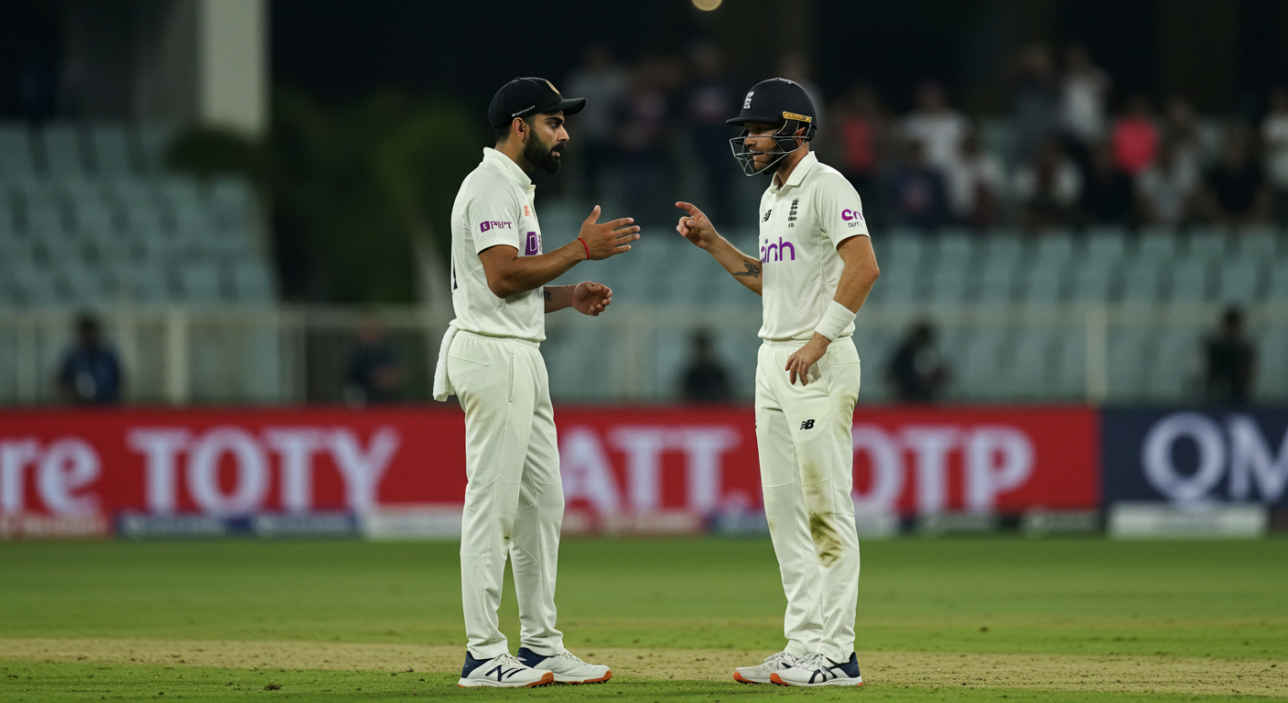
The Best Sledges in Cricket — And Why They Worked
Cricket has long carried a veneer of decorum—white flannels, gentle applause, and sportsmanship. But beneath that surface lies one of the most psychologically intense arenas in all of sport. Nowhere is that more evident than in the art of sledging—the strategic use of verbal jabs to unsettle, distract, or downright humiliate an opponent.
Unlike brute-force aggression or technical dominance, sledging is about control. The best sledges don’t merely sting; they get inside a batter’s head, disrupt rhythm, and create doubt. They’re part banter, part warfare. And in cricket, where concentration is everything, a well-timed line can do as much damage as a toe-crushing yorker.
This article dives into the best sledges in cricket history, not just for their entertainment value, but for the psychology behind them. What made them effective? Why did some comments unravel the world’s best batters? And when does it cross the line from clever to classless?
From Merv Hughes to Virat Kohli, we explore how wit, sarcasm, and sheer presence have been weaponised to gain an edge—and why, when done right, sledging is more than trash talk. It’s psychological cricket at its most refined.
1. McGrath vs Brandes: “Why Are You So Fat?”

Let’s begin with one of the most infamous—and hilarious—sledges in cricket folklore. During a match between Australia and Zimbabwe, legendary fast bowler Glenn McGrath, not known for subtlety, decided to have a go at Zimbabwean tail-ender Eddo Brandes. As Brandes scratched around at the crease, McGrath fired:
“Why are you so fat?”
Brandes didn’t flinch. Without missing a beat, he replied:
“Because every time I sleep with your wife, she gives me a biscuit.”
Cue laughter from both teams. But beyond the comedy, this exchange is a masterclass in reclaiming psychological territory. McGrath’s sledge was meant to provoke and dominate. Brandes, far from rattled, hit back with a line that not only shut McGrath up but had the Australians in stitches. In that moment, the mental scales tilted.
This works because it breaks the power dynamic. Sledging is often hierarchical—the established player trying to belittle the underdog. But Brandes flipped the script. He didn’t try to defend himself or rise to the bait. Instead, he went on the offensive—cheekily, sharply, and with enough wit to turn the moment in his favour.
It also humanised the game. In an era before social media turned every moment into theatre, this sledge became locker-room legend. And for once, the tail-ender had the last word.
2. Viv Richards to Greg Thomas: “It’s Red, It’s Round — Now Go Fetch It”
Fast bowler Greg Thomas, representing Glamorgan, once thought he’d earned the right to needle the mighty Viv Richards during a county match. After a couple of beaten edges, Thomas sarcastically quipped:
“It’s red, it’s round, and it weighs about five ounces, in case you were wondering.”
Richards didn’t say a word. He just waited for the next delivery—and promptly smashed it over the boundary, out of the ground, and into a nearby river. Only then did he turn to Thomas and deliver the immortal line:
“You know what it looks like, now go find it.”
This sledge worked not because of the insult—it was the timing, the restraint, and the outcome. Richards let his bat do the first part of the talking. The comeback only landed because the action had already humiliated the bowler. In psychological terms, this was not just one-upmanship—it was total dominance.
What made it even more effective is that Richards didn’t engage in a verbal duel right away. He waited, chose his moment, and when he struck, it was devastating. The sledge wasn’t emotional; it was calculated. The kind that empties the air out of an opponent’s chest. Thomas never sledged him again.
This moment reminds us that the best responses often come after the shot, not before. That the line isn’t always enough—it’s the authority behind it that makes it resonate. Richards owned the space, the moment, and the scoreboard. That’s why this sledge remains legendary.
3. Shane Warne vs Daryll Cullinan: “I’ve Been Waiting Two Years for This”

Some sledges aren’t about comedy—they’re about psychological chess. One of the most chilling examples came from Shane Warne, arguably the greatest leg-spinner in cricket history and a master of on-field mind games.
South Africa’s Daryll Cullinan had been open about his difficulties facing Warne’s spin. He was even dropped for a tour of Australia because of how badly Warne had undone him in the past. After a two-year gap, Cullinan returned to the crease to face Warne once again.
As Cullinan walked out to bat, Warne greeted him with:
“I’ve been waiting two years for this.”
Cullinan’s reply?
“Looks like you spent it eating.”
The comeback was decent, but the damage had already been done. Warne had planted a seed before bowling a single ball. He invoked history, fear, and inevitability. And sure enough, not long after, Cullinan fell again to Warne—his record against the spinner would remain abysmal.
This sledge worked because it struck at vulnerability. Warne didn’t need to shout or insult—he knew Cullinan’s demons, and he reminded him of them just loudly enough to echo in his mind. Warne understood that pressure isn’t just applied with the ball—it can be injected with a sentence.
The brilliance of this exchange lies in its subtle cruelty. Warne wasn’t aiming for humour—he was aiming for the psyche. And like a great tactician, he struck before the first delivery had even turned.
4. Ricky Ponting to Parore: “You’re Not Good Enough to Sledge Me”
Australian great Ricky Ponting was as aggressive with the bat as he was with his mouth, especially when facing chirpy opponents who dared to test his patience. One such moment came against New Zealand wicketkeeper Adam Parore, known for his running commentary behind the stumps.
As Ponting settled in, Parore began his routine, needling him with remarks and snide observations. Eventually, Ponting turned and snapped:
“Mate, you’re not good enough to sledge me.”
It was brutal. And effective. Ponting didn’t raise his voice or get personal—he cut straight to the hierarchy. In that sentence, he not only silenced Parore but reinforced his own stature in the contest. That’s what made it sting.
This sledge worked because it hit at the core of sporting ego. Sledging is, at its heart, a contest of psychological dominance. For it to work, the sledger has to be seen as an equal threat. By dismissing Parore’s status entirely, Ponting made clear that he didn’t even qualify as an opponent worth responding to.
Parore reportedly quietened after that. The line wasn’t clever in a traditional sense—it wasn’t a witty one-liner or a pop culture reference—but it didn’t need to be. Its power came from status, and Ponting knew exactly where he stood in the pecking order.
This moment is a reminder that sometimes the best sledge is a statement of superiority, delivered at just the right time, without needing embellishment.
5. Virat Kohli vs Joe Root: The Mic Drop That Echoed

One of the more recent sledging moments to go viral came during the 2021 England tour of India. In the second Test in Chennai, Joe Root had scored a monumental double century in the first match, and tensions were bubbling. The Chennai pitch had started turning square, and the Indian spinners were hunting.
When Root came to bat, Virat Kohli, never one to stay silent, reportedly chirped:
“This isn’t flat like Galle. Let’s see how you go here.”
Root didn’t respond with words—he responded with runs. He scored a crucial half-century in a low-scoring game on a pitch that many deemed unplayable. After his innings, Root simply dropped his bat as he walked off—no celebration, no fist pump. Just a mic-drop gesture.
While not a verbal sledge in itself, Root’s gesture was a perfect counter-sledge. It flipped the script on Kohli’s challenge. The message was clear: “I’ve done the job. Let the bat speak.”
Kohli, to his credit, smiled. And that’s why this moment stands out—it wasn’t hostile. It was mutual gamesmanship, a theatre of confidence where both men understood the stakes and respected the punch and counterpunch.
What made this sledge effective was its contextual sting—Kohli’s attempt to undermine Root was bold, but Root’s answer was elegant and definitive. It showed that in modern cricket, gestures can sledge louder than words, especially when backed by performance.
6. James Anderson to Mitchell Johnson: “Why Are You So Scared of Bouncers?”
While many famous sledges come from batters or wicketkeepers, James Anderson—England’s most prolific Test bowler—has had his share of chirps, especially when the heat of the Ashes gets going. One particularly icy exchange came during the 2010–11 series in Australia, with Mitchell Johnson out of rhythm and under pressure.
Anderson, noticing Johnson backing away from short-pitched deliveries in the nets and even during the match, reportedly asked:
“Why are you so scared of bouncers? You bowl them, don’t you?”
The line wasn’t a joke. It was a pointed dig at Johnson’s confidence, framed with deliberate hypocrisy. It struck at a bowler’s pride—not just in physical courage, but in consistency and control. At the time, Johnson was struggling to find his length. Anderson’s sledge highlighted it for everyone to hear.
While Johnson didn’t immediately respond, the mental battle clearly played on. He was dropped after that series and only truly recovered for the 2013–14 Ashes, where he returned with fire and vengeance. But that response—years later—only proves how long sledges can linger.
This sledge worked not because it rattled Johnson immediately, but because it exposed a technical and psychological flaw. Anderson didn’t need to raise his voice. He just shone a spotlight on a moment of uncertainty. In cricket, sometimes that’s all it takes to unravel a player’s focus.
Conclusion: The Best Sledges in Cricket — And Why They Worked

The best sledges in cricket aren’t vulgar. They’re timed, tactical, and delivered with just enough sting to disarm, not destroy. Whether it’s Viv Richards quietly eviscerating a bowler or Kohli firing off calculated remarks at the right moment, sledging—when done well—becomes part of the mental chess match that defines the sport.
What separates a great sledge from a forgettable jab is its impact on the game. Did it get under the opponent’s skin? Did it shift the balance of pressure? Did it provoke a rash shot, or create an unforgettable moment? The ones we remember—McGrath vs Brandes, Warne vs Cullinan, Ponting vs Parore—aren’t just funny. They’re narrative-shaping.
It’s also clear that sledging has evolved. In the age of stump mics, social media, and heightened scrutiny, today’s players are more selective. The loudmouth bravado has given way to psychological precision—a quick word between deliveries, a knowing stare, a sarcastic comment that lingers longer than a bouncer.
Ultimately, the best sledges aren’t about being cruel—they’re about being clever. They work because they exploit the thin margins between confidence and collapse, between poise and panic. And in a game where the battle is as much mental as physical, that single sentence—well-timed and well-delivered—can be worth more than any delivery bowled.





